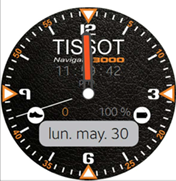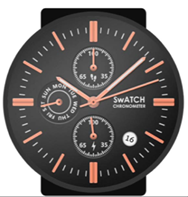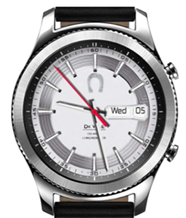Do smartwatch apps infringe Swatch trade marks?
- Rosie Burbidge
- May 27, 2022
- 3 min read

In a High Court judgment on 20 May 2022, Mrs Justice Falk found that Samsung had infringed a large number of trade marks owned by members of the Swatch group of watch makers. The case (Montres Breguet SA & Ors v Samsung Electronics Co. Ltd) provides useful guidance on infringement and the role of operators of third-party app stores.
Swatch claimed that 30 watch face apps made available by third-party developers on the Samsung Galaxy App store infringed 23 trade marks belonging to brands such as Tissot, Longines, Omega and Jaquet Droz. The apps had been downloaded over 157,000 times in the UK and EU during the relevant period.
Third-party developers on the store agreed to Samsung’s terms and conditions, which included warranties regarding IP rights. During Samsung’s review process, a team of software engineers in Vietnam reviewed the apps including for IP infringement, but the guidance given to them was very limited.
The judge concluded that on some of the apps the watch face infringed, in others the app name infringed, and in some cases both infringed.
There was double-identity infringement where the signs were used on watch faces in relation to smartwatches. In other cases, there was Article 9(2)(b) infringement based on similarity between watch face apps and smartwatches and a likelihood of confusion.
Three of the apps infringed under Article 9(2)(c).
Use of the marks
Samsung argued that it did not use the marks at all but simply provided a vehicle for app developers. However, the judge concluded that, taking into account its conduct as a whole, it did use the signs in the course of trade.
This conduct included assistance to make it easier for app developers to create apps and providing an environment under which apps could be uploaded, stored and downloaded by customers.
Samsung’s role went well beyond being a can filler or warehouse-keeper, said the judge:
"It is not just providing the necessary technical environment to allow the apps to be uploaded, displayed in the SGA store and downloaded. It has a clear commercial interest in the watch face apps in the SGA store, their availability, presentation and use by consumers … In my view there was active behaviour by Samsung in relation to the apps and control by it of their availability, and Samsung was using the apps, and the signs contained in them, in its own commercial communications."
She found that the watch face apps were not identical to the goods covered by the marks, but were similar to smartwatches on the basis of complementarity, and that smartwatches were a form of watch: once acquired, a watch face app would function as a watch.
Connection with Swatch
Samsung also argued that the signs on the apps were not used to indicate that the apps originated from or had any connection with Swatch. However, the judge said Samsung’s arguments on function and descriptive use were unconvincing.
She found that each app was not the name of something that would be understood as a picture or depiction of a watch face but as something that was, and would function as, a watch face. Moreover, the average consumer would assume there was a licensing or other economic arrangement with the watch maker permitting use of the sign.
“I conclude that a reasonably observant user would not have been able to ascertain without difficulty that Samsung did not provide the app under an arrangement with Swatch, or that there was otherwise no economic link between the provider of the app and Swatch,” wrote the judge.
e-Commerce Directive
However, Falk J said that the test in Article 14(1)(a) of the Directive is “whether a diligent economic operator should have identified the illegality by reference to facts or circumstances of which it is (actually) aware”.
She concluded that Samsung’s content review process meant it would become aware of infringing app names, appearances and branding: “In essence, having determined for its own (perfectly legitimate) reasons to undertake a content review, Samsung is required to behave as a diligent operator would in respect of the content of which it becomes aware in the process.”
Moving online
The judgment (which comprises 234 paragraphs, three appendices setting out the findings for each app and 17 footnotes) is well worth reading, especially for brand owners in the fashion industry and technology companies. With more and more shopping moving online and in particular onto apps, similar clashes between the physical and digital worlds are likely to increase, and this thorough analysis of UK and EU law will be very useful.
To find out more about the issues raised in this blog contact Rosie Burbidge, Intellectual Property Partner at Gunnercooke LLP in London - rosie.burbidge@gunnercooke.com


